Estate Jewelry: A Cuff, a Spear, and a Window Locket
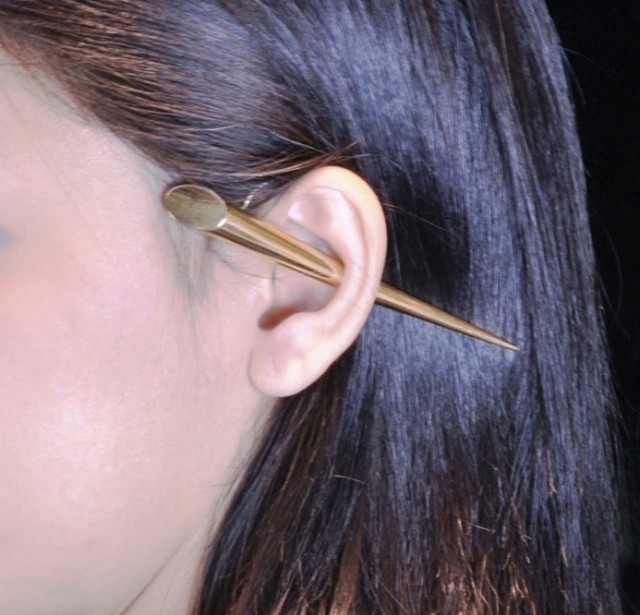
Back in 1867, a Venetian Marquis by the name of Pietro Selvatico established an art school in Padua, Italy. While The Istituto Statale d’Arte Pietro Selvatico was essentially a vocational school, Selvatico — who was himself an architect and art critic — didn’t just want the students to learn how to churn out items on a production line, he wanted them to gain an intellectual mastery of their craft as well. The school maintained this well-rounded approach to education, particularly in the second half of the 20th century, through professors such as Mario Pinton, a great champion of the use of gold when it was considered unfashionable, and Francesco Pavan, one of Pinton’s former students and a master of geometrical forms. Under Pinton, Pavan, and others, the students at the institute were encouraged to treat jewelry as sculpture, and their unconventional work eventually drew international attention. These goldsmiths and jewelers came to be known collectively as the “The Padua School,” and a large exhibit featuring their work recently travelled the world. One of those former students is Marco Rigovacca, who designed this 18k gold “Javelin” earring in 1986.
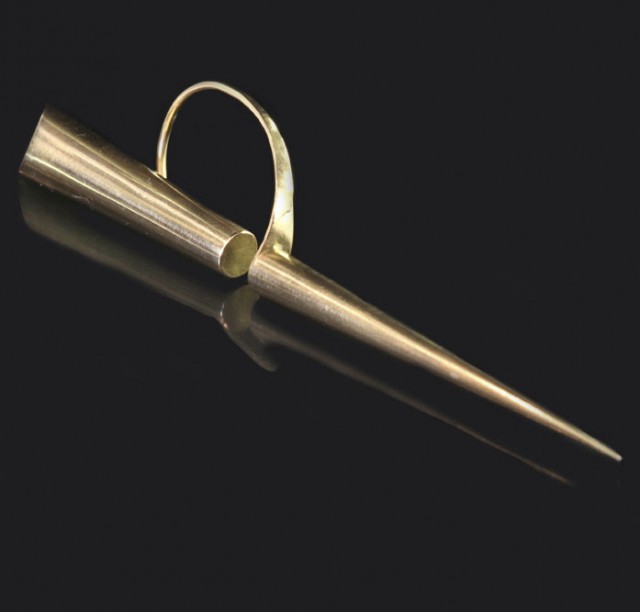
The piece appears to pass through the ear, but is actually split into two parts, with a hidden connector that goes behind the ear.
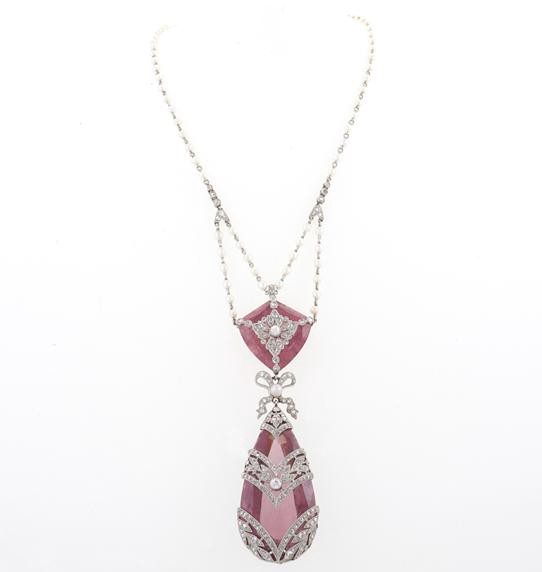
La Belle Époque (or “The Beautiful Era”) generally refers to the period in France from around 1870 up until the First World War. The country was between wars, and many French people saw their quality of life rise, leading to think of it as a sort of “golden age.”
This French platinum necklace is a product of that time period. It dates to 1910, and features two large, fancy-cut pink topaz stones, with accents of natural seed pearls, 202 rose-cut diamonds, and two larger old European-cut diamonds. Absolutely lovely.
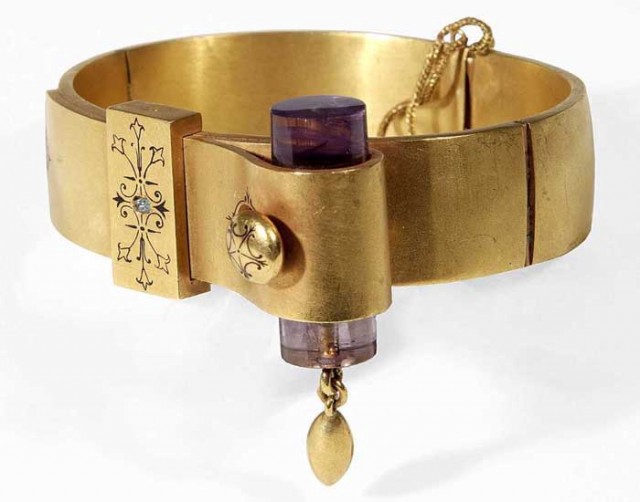
Belt-themed bracelets were common in 19th-century jewelry, but this French bracelet stands out due for its very modern-looking cylindrical amethyst. In gold with French hallmarks, the piece dates to around 1880, and includes the more traditional elements of black enameling and a diamond accent.
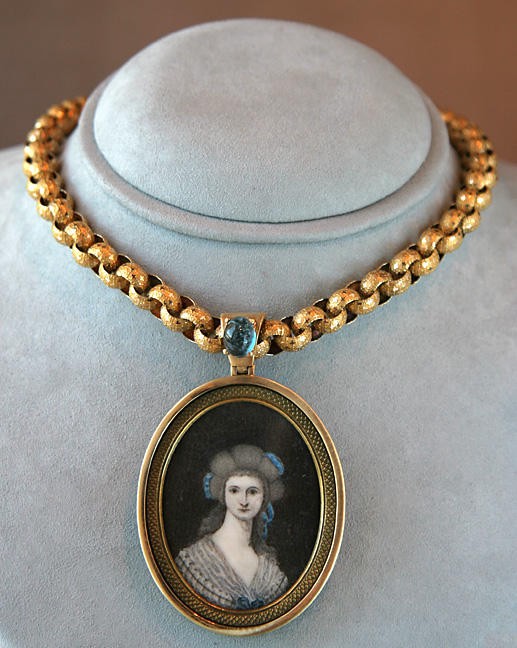
This 18th-century miniature portrait in ivory has been set in a contemporary 18k yellow gold frame highlighted with an aquamarine. The chain isn’t included in the sale because it’s already been sold — which is a shame, because it’s lovely, and Georgian, and it matches the pendant really well. But the main reason I like this piece is the woman herself; she reminds me of an Edward Gorey drawing!
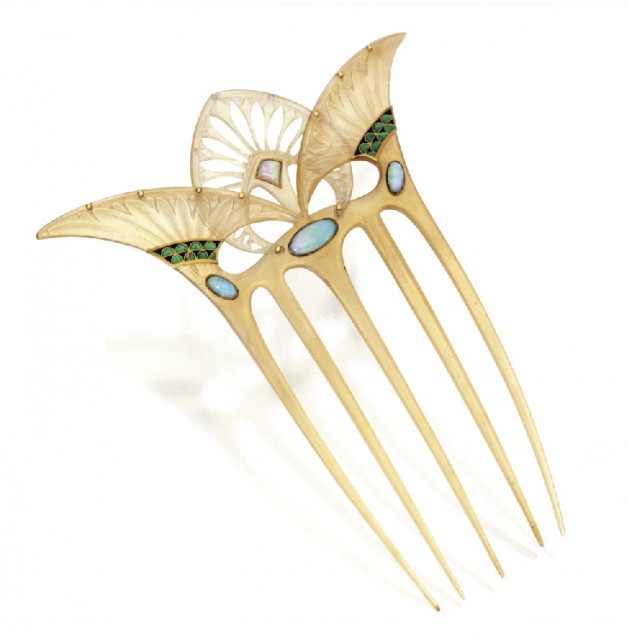
Sotheby’s New York is holding an Important Jewels auction this Thursday (February 9), and I’m particularly taken with this lot: a French carved tortoiseshell comb by the brilliant Georges Fouquet. Circa 1905–1908, it’s an Egyptian revival piece, with cabochon opals and green and black enamel accents. It looks extremely delicate, but tortoiseshell is actually very strong.
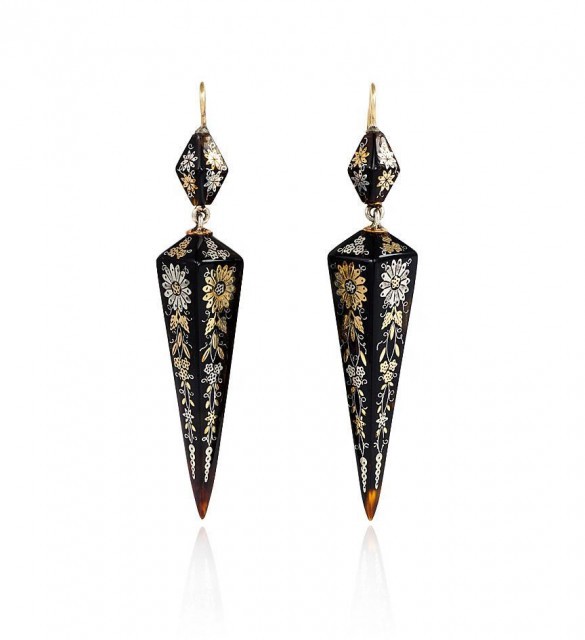
Circa 1865, a pair of antique tortoiseshell piqué earrings featuring an inlaid floral design in gold and silver. Piqué is a decorative technique in which a base material — most often tortoiseshell, horn, or ivory — is inlaid with tiny bits of gold, silver, or brass. The technique originated in Italy in the 17th century, but became very popular in jewelry designs during the late 1800s.
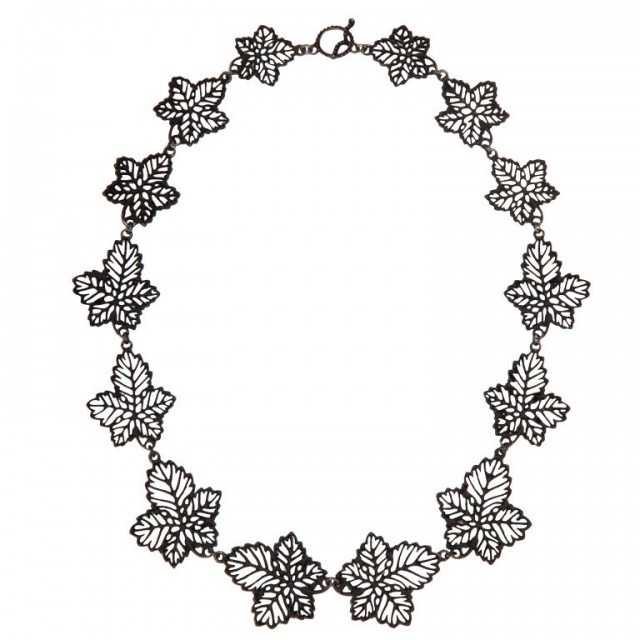
I last showed you some Berlin Iron way back in March, so it’s nice to revisit it again with such a gorgeous necklace. This piece is made by Geiss, one of the most important producers of iron jewelry in the 19th century. Wartime might have meant that people had to be both frugal and patriotic, but it didn’t tamp down their desire for adornment. Demand was high both within Germany and in other European countries, so, to deal with the influx of orders, jewelry designer Johan Conrad Geiss created his own foundry in Berlin.
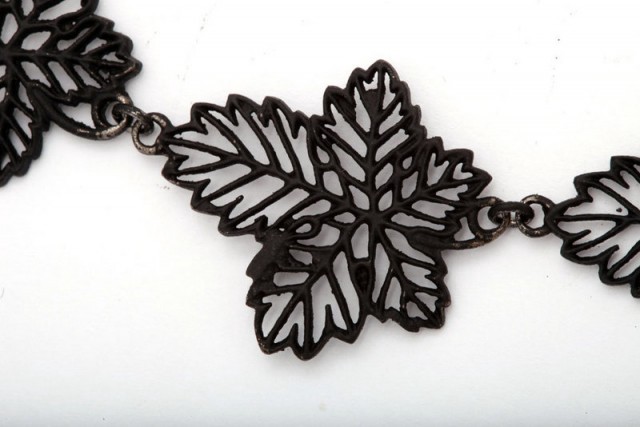
This Geiss leaf necklace is an excellent example of the contradiction that is Berlin Iron: light, delicate, and graceful, yet made of iron. In the detail shot, you can see where some of the black lacquer coating has been worn off.
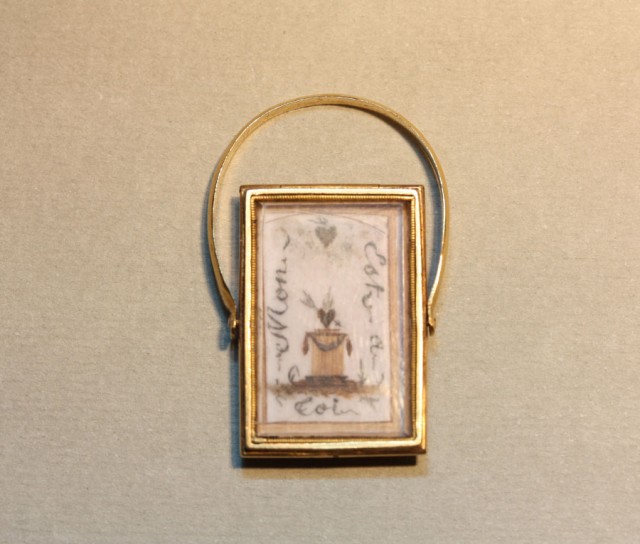
More hairwork! This 18k gold-and-ivory ring is French, and says “Mon coeur est a toi” or “My heart is yours” in rebus form (“coeur” is replaced by the depiction of a heart).
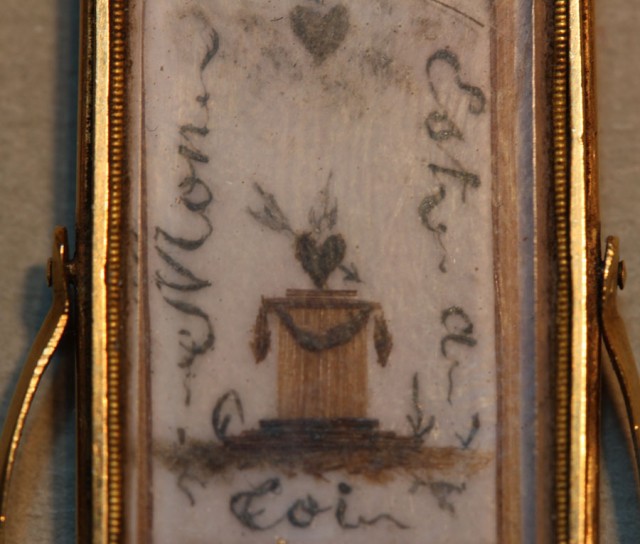
The lettering and central image of a pierced, burning heart on a pedestal are all carefully created with hair — whose, we don’t know. The plaque also swivels around to reveal a carnelian plaque. The piece dates to the 18th century.
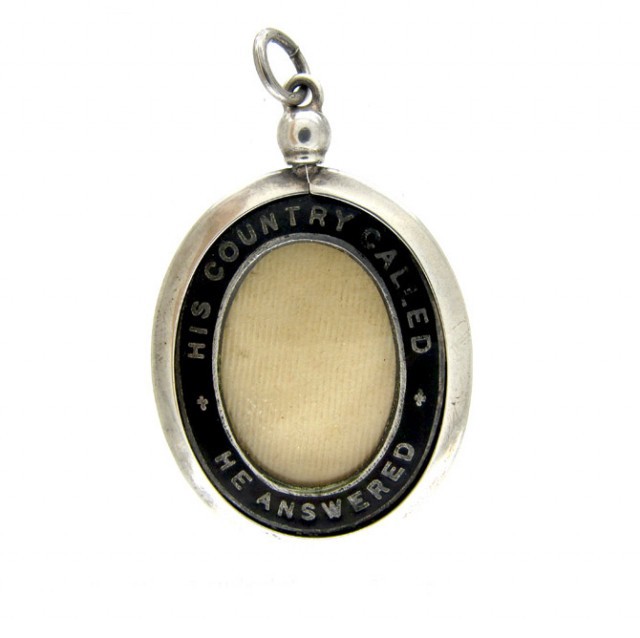
A lovely, sentimental, Edwardian memorial window locket in silver with black enamel. The outside band reads “His country called — He answered,” and it refers to the first World War. Unfortunately, any original photos the locket may have contained have been lost.
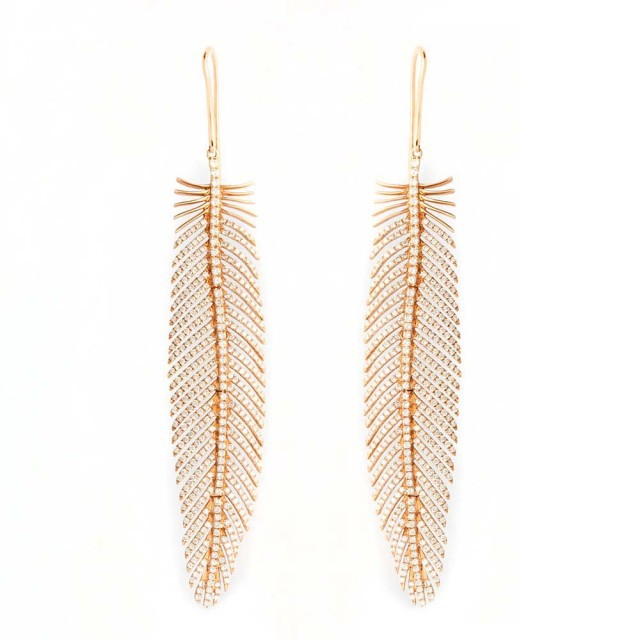
These three-inch 18k rose gold and diamond feather earrings are contemporary, but wow. Gimme.
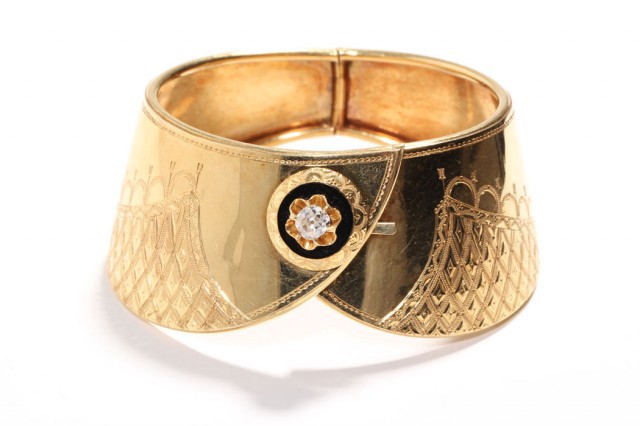
Circa the mid-19th century, this bracelet is designed to look like a dainty shirt cuff. It’s 18k hand-engraved yellow gold with a central onyx disc, and an old-mine cut diamond in what known as a “buttercup” setting (for self-explanatory reasons).
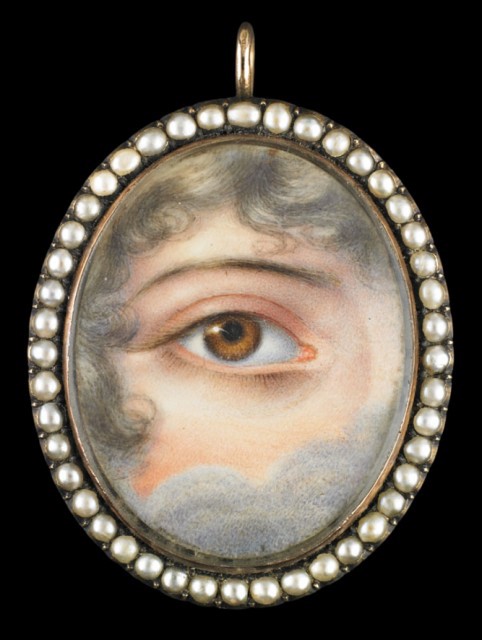
I talked about “lover’s eye” jewelry a couple of months ago, and some of you were creeped out. But if you WEREN’T creeped out, and if you happen to be in the Birmingham, Alabama, area, check out this exhibit! “Look of Love: Eye Miniatures from the Skier Collection” showcases the largest collection of eye portraits in the world, including brooches, lockets, rings, and toothpick cases. The exhibit opens tomorrow at the Birmingham Museum of Art, and continues until June 10.
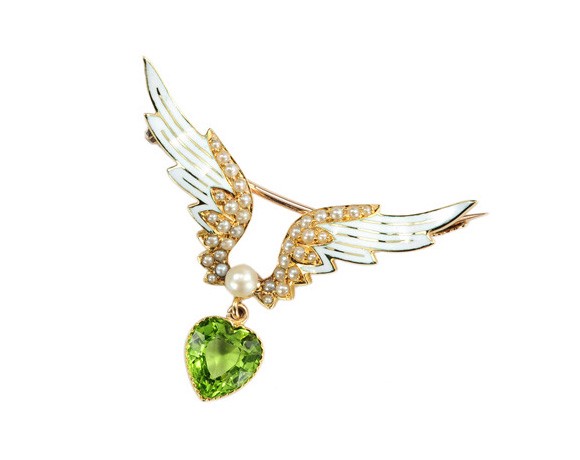
I’m not usually all that big on heart shapes, but this is so pretty! Circa 1900, this winged brooch is made of 15k gold, with white enameling, seed pearl accents, and a bright, heart-shaped peridot. It’s also under $1,000 (okay, JUST under) but come on, Valentine’s Day is coming up, and you can always ask about layaway. Do iiiiit.
Previously: A Bird Brooch Ruined My Life.
Monica McLaughlin is a bad influence.